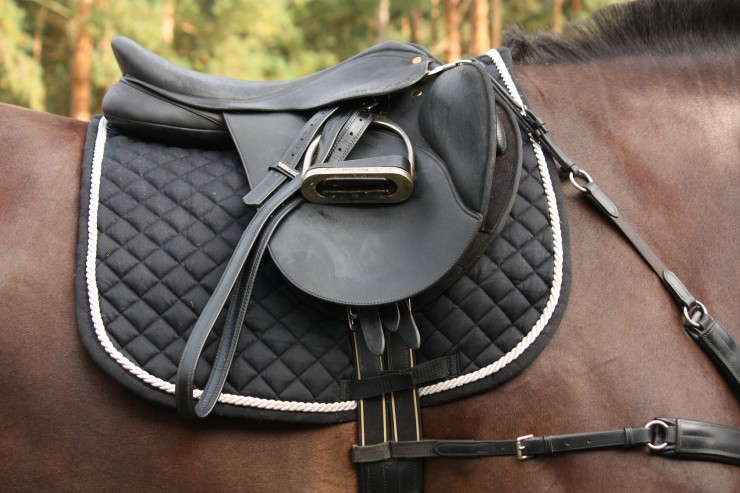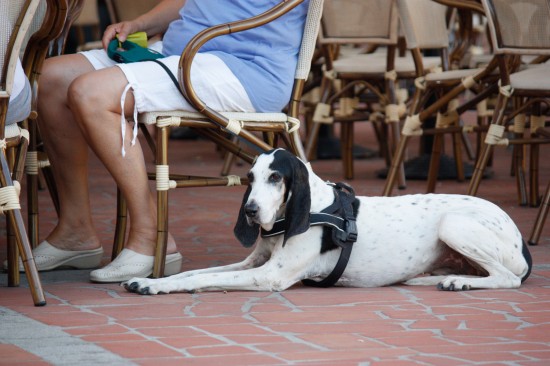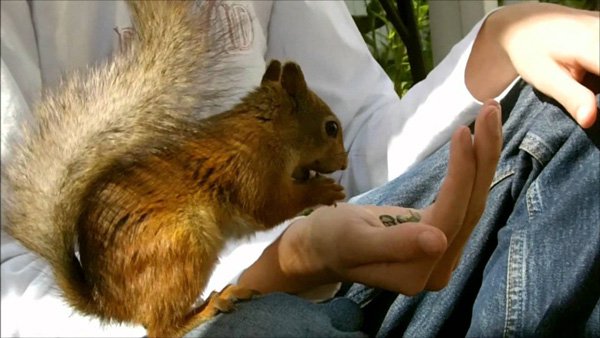

Riding in a saddle that fits a horse correctly is of paramount importance, but things like a sore or an injury on their back, withers and around the girth that can make life extremely uncomfortable which means putting a saddle on their back would be out of the question. Recognising there may be a problem brewing before you tack up can save your horse a lot of discomfort which could lead to them throwing their rider off.
Checking over a horse's back and other areas of their body where a saddle and girth sits is essential. It's something that needs to be done on a regular basis and not just when you've invested in a new saddle or girth for your horse. Even a stirrup bar on a saddle can dig into a horse's side which unless you look closely, you might not even realise is happening.
Badly fitting saddles are the main culprits when horses develop sores and other skin issues in specific areas of their bodies which is why only a qualified saddler should ever fit a saddle for your horse making sure it sits well in all the right places. Common sores seen in horses where a saddle is to blame include the following.
Sores around withers are typically caused by a saddle being too wide at the pommel which sees it dropping down and rubbing resulting in the area around the withers becoming sore . However, if the saddle is too narrow, it sits far too high which creates pressure points that will turn into sores each side of a horse's withers. The first sign of a problem is when small oedemas start forming where the saddle has rubbed the skin. These swelling fill up with fluid and will eventually break the skin causing angry looking painful sores if the saddle responsible is still used on the horse.
Horses will lose the pigment in their coat not only due to a sore opening up and cracking, but through friction caused by an ill-fitting saddle. The constant movement anywhere on a horse's back and withers will eventually cause the colour of their coat to change. The hair is rubbed off due to the friction and this in turn causes dry spots which are some of the early warning signs that a saddle does not fit a horse correctly. When the hair grows back it is typically white which clearly shows there has been a problem at some point in time due to an ill-fitting saddle.
All too often where stirrup bars touch a horse's side it can cause a sore because of the way they rub against the skin. It's always worth checking these to make sure they are not rubbing and causing any discomfort by running your hand over the area when you untack your horse after a ride.
Ill-fitting girths cause all sorts of problems where painful oedemas form which are very similar looking to giant blisters. However, it is not only an ill-fitting girth that can be the cause of a sore forming because dirty girths can be responsible for damaging the skin. Girth galls can be really hard to treat and could put a horse out of action for quite some time.
Rain scald is another serious skin complaint that many horses when they “winter” out which can make their lives miserable. However, even in the spring and summer months a horse can get these painful rashes on their backs too which can make it very hard to put a saddle on their backs. The bad news is that it's another condition that can take a very long time to clear up.
Hives - horses can have a reaction to something which causes them to come out in hives. This is another very painful condition which often means having a saddle on their backs would be far too painful.
Sweet itch – this is another skin condition that can make life miserable for horses. It is caused by a hypersensitivity to the saliva of a very small biting midge and horses are typically attacked in specific areas of their body which includes along their backs and under their bellies making it difficult and painful for them to be tacked up. Some horses suffer so badly, they need to wear fly sheets which offer them a little protection against these biting midges, but the only way to really protect them is to keep them standing in when the midges are about.
Ringworm – this is yet another parasite that can live for years in untreated wood and which can take hold on a horse's back and other areas of their bodies making it hard to tack them up. The problem with ringworm is that it is not only a very painful, but it is very contagious too!
Sores caused by rugs – horses can develop sores when they have to wear rugs whether these are indoor or outdoor, heavy or light. Again, although a badly fitting rug could be responsible for causing the sores, even well fitting rugs can slip and cause a sore which can make it hard to saddle and girth up a horse.
It's really important to check your horse's back over on a regular basis and to see whether any sores or bumps may be forming and it's best to do this after you've been out for a ride. It's also important to check the girth area to see if any skin is broken or sore looking and to make sure you regularly wash your girths to reduce the chance of it happening. If you find any sores, it's time to call out a saddler to see if your horse needs to be fitted with one that sits well on their backs and to stop using the saddle that's causing all the problems.
 Healthy feeding is very important for all your pets and including fishes
Healthy feeding is very important for all your pets and in
Healthy feeding is very important for all your pets and including fishes
Healthy feeding is very important for all your pets and in
 Utilizing a Greenhouse as an Animal Sanctuary
Utilizing a Greenhouse as an Animal Sanctuary
Utilizing a Greenhouse as an Animal Sanctuary
Utilizing a Greenhouse as an Animal Sanctuary
 Dogs are People
Dogs are People
The ultimate dialogue of wheth
Dogs are People
Dogs are People
The ultimate dialogue of wheth
 Dog Friendly Restaurants & Other Eateries In & Around London
Dog Friendly Rest
Dog Friendly Restaurants & Other Eateries In & Around London
Dog Friendly Rest
 Chicken Runs Provide both Activity and Protection to Your Feathered Pet
Chicken Runs Provide both Activity and Protection to Your
Chicken Runs Provide both Activity and Protection to Your Feathered Pet
Chicken Runs Provide both Activity and Protection to Your
Copyright © 2005-2016 Pet Information All Rights Reserved
Contact us: www162date@outlook.com